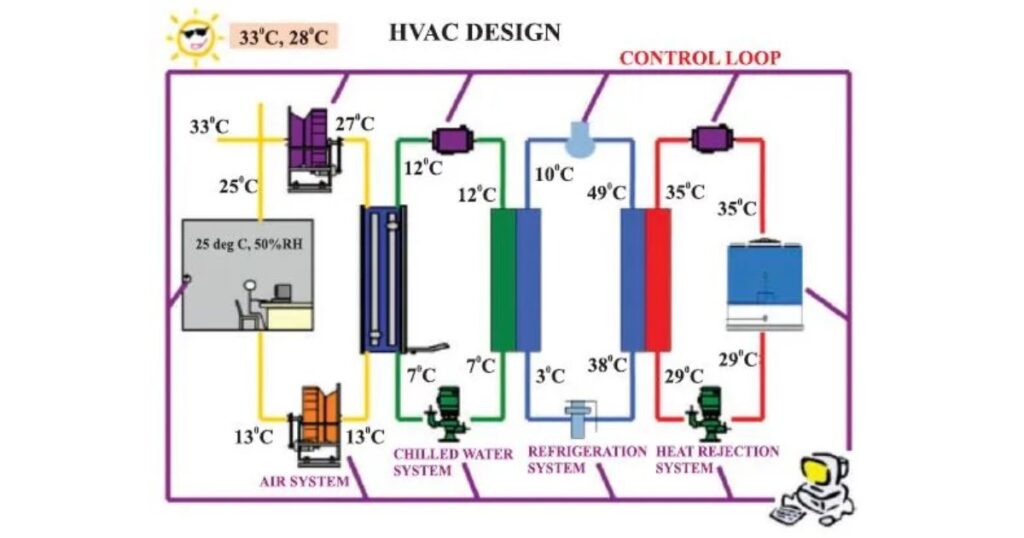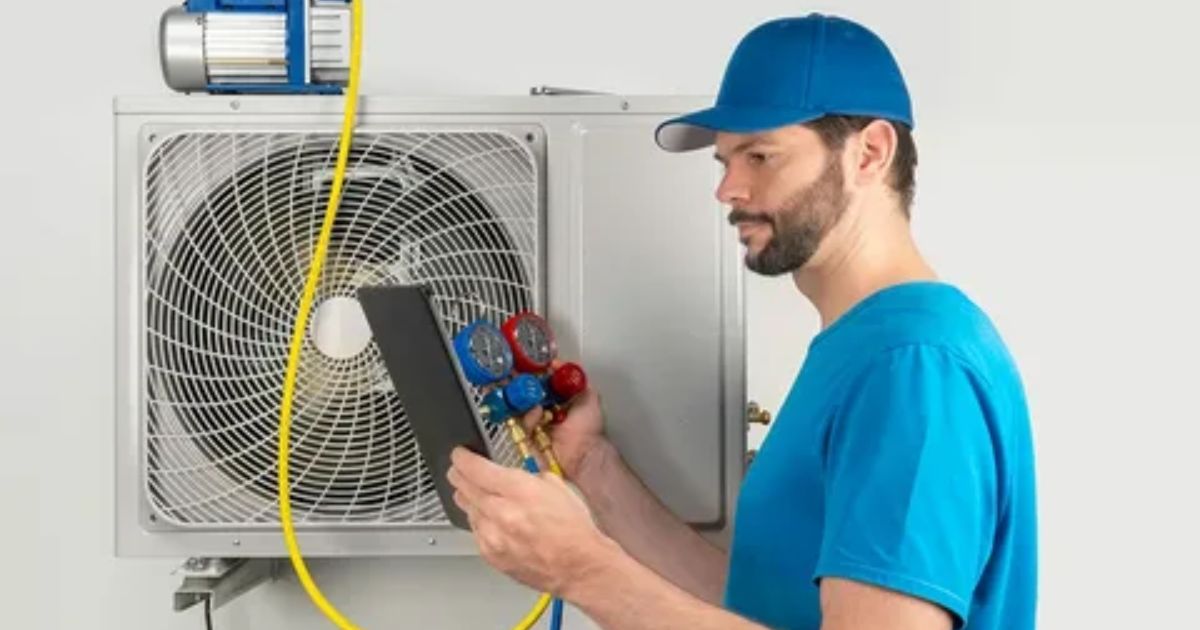Welcome to the ultimate guide on mastering refrigeration and air conditioning technology! Whether you’re a seasoned professional or just starting out in the field, this guide has everything you need to know to become an expert. From understanding the basics to tackling advanced concepts, we’ve got you covered. Get ready to dive deep into the world of refrigeration and air conditioning and unlock the secrets to success in this essential industry.
First Things of Refrigeration and Air Conditioning Technology
Let’s start from the very beginning – what exactly are refrigeration and air conditioning? At their core, these technologies are all about controlling temperatures. Refrigeration aims to remove heat from an enclosed space to keep things cool or frozen. Air conditioning works to remove heat and moisture from indoor air for personal comfort.
Both systems rely on the same basic science and mechanical process. They use a special substance called a refrigerant to absorb and release heat as it cycles between liquid and gaseous states. This refrigeration cycle is what produces the desired cooling effect.
Refrigeration and Air Conditioning Technology: Key Ideas
To truly understand how refrigeration and air conditioning operate, we need to grasp a few key concepts and components involved in the cycle.
Refrigerants are liquids with unique properties that allow easy conversion between liquid and gas. As this phase change occurs, heat is either absorbed or released in large amounts.
The compressor is the heart pumping the refrigerant through the closed loop system. It squeezes refrigerant gas, increasing its pressure and temperature.
The condenser expels this hot, high-pressure refrigerant gas’ heat to the outside environment, condensing it back into liquid form.
The liquid refrigerant then passes through an expansion valve, undergoing a pressure drop that allows some of it to vaporize into a cold gas.
Finally, this cold refrigerant gas circulates through evaporator coils, absorbing interior heat from the air around it before returning to the compressor.
Design and Installation of HVAC Systems

Properly designing and installing refrigeration and HVAC systems is crucial for efficient, reliable performance. First, the cooling load must be calculated based on factors like building size, climate, insulation levels and more.
From there, the ideal system type (split, packaged, heat pump etc), size, and refrigerant can be selected. The layout must carefully plan component placement, ductwork, drainage, and access for servicing.
Precision is key during installation. Refrigerant piping must be carefully joined and free of leaks, contaminants, or restrictions. Electrical work requires proper wiring and safety controls. Installers also need to calculate the precise refrigerant charge for optimal operation.
Upkeep, Troubleshooting, and Repair
Like any complex system, refrigeration and air conditioning requires regular upkeep to continue running smoothly. Routine maintenance checks the condition of all components, cleans coils and filters, lubricates motors, and tests performance.
When issues do arise, skilled technicians employ various troubleshooting methods to diagnose faults. This could involve inspecting refrigerant levels and pressure readings, electrical testing, airflow analysis, and other techniques.
Depending on the specific problem identified, repairs may be needed for anything from replacing worn compressor parts to sealing leaks, clearing clogs or drainage issues, recharging refrigerant, and more. Proper repair procedures and EPA-approved practices are essential.
Creations and Future Trends
The refrigeration and air conditioning field is never stagnant. Continual research drives new design innovations focused on increasing energy efficiency, reducing environmental impacts, and adding smart capabilities.
For example, variable refrigerant flow (VRF) systems allow more customized zoning and load distribution versus traditional units. Inverter-driven compressors continuously adjust cooling output to match real-time needs.
We’re also seeing advances in environmentally-friendly refrigerants with ultra-low global warming potential, from natural substances like ammonia and carbon dioxide to new synthetic blends.
“Smart” HVAC systems featuring internet connectivity, remote monitoring sensors, automated control algorithms, and integration with the Internet of Things is another major frontier being explored.
Read more posts: Technical vs Technological: Understanding the Key Differences
Building a Career
For those interested in a hands-on career working with refrigeration and air conditioning systems, there are numerous paths available with the right training and qualifications:
HVAC/R Technician – Install, repair and maintain residential and commercial HVAC systems
Refrigeration Mechanic – Specializing in industrial refrigeration for food/manufacturing
Controls Technician – Focus on configuring HVAC control systems and energy management
HVAC Engineer – Design HVAC systems for buildings and integrated solutions
Green HVAC Professional – Skilled in sustainable design, energy audits, and retrofitting
The field offers solid employment prospects across many industries. Most roles require vocational training, certifications, and continual education to stay current with evolving HVAC technology.
Conclusion
Refrigeration and air conditioning are marvels of engineering providing tremendous benefits to our modern quality of life – from fresh foods and comfortable living, to enabling advanced industries and applications.
As our society’s needs evolve, innovation within the HVAC field pushes forward to develop increasingly energy-efficient, environmentally sustainable and smart climate control solutions.
By understanding the fundamental concepts while also embracing emerging technologies, the cooling systems that helped propel humanity into the 21st century will continue adapting to build a better world.
FAQs:
What is “Mastering Refrigeration and Air Conditioning Technology” about?
“Mastering Refrigeration and Air Conditioning Technology” is a guidebook for professionals in the field. It covers everything you need to know about refrigeration and air conditioning systems, from how they work to troubleshooting common issues.
Who can benefit from this book?
This book is perfect for anyone working in the refrigeration and air conditioning industry, including technicians, engineers, and students studying HVACR (Heating, Ventilation, Air Conditioning, and Refrigeration) systems.
What topics are covered in the book?
The book covers a wide range of topics, including refrigeration principles, air conditioning systems, refrigerants, system components, installation techniques, maintenance procedures, and troubleshooting methods.
How will this book help me in my career?
By reading this book, you’ll gain a deep understanding of refrigeration and air conditioning technology, which will make you more knowledgeable and confident in your work. You’ll learn valuable skills that can help you excel in your career and tackle any challenges that come your way.
Is this book suitable for beginners?
Yes, this book is suitable for beginners who are new to the field of refrigeration and air conditioning. It starts with the basics and gradually progresses to more advanced topics, making it easy for anyone to follow along and learn at their own pace.

Lucas Steele is an experienced professional with 10 years in education. “Teachbullit” is his domain, reflecting expertise in teaching and learning.









